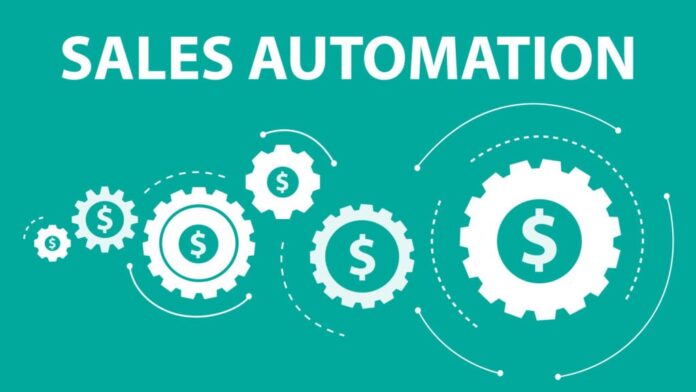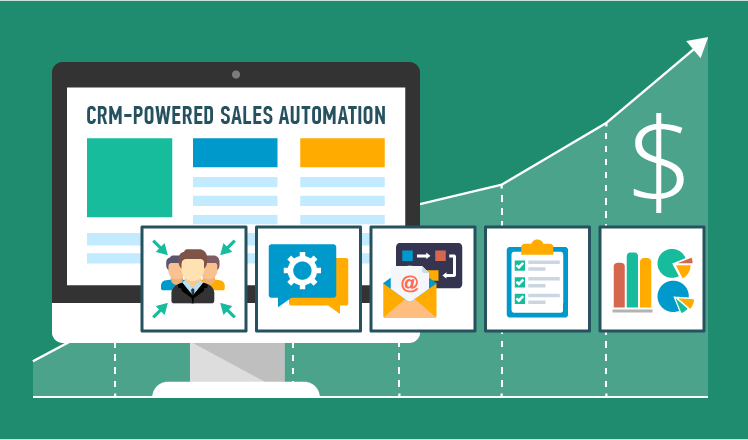
Sales automation is rapidly transforming the landscape of business operations, emerging as a pivotal force in modernizing and optimizing sales processes. This innovative approach leverages technology to automate and streamline various aspects, from lead generation to customer relationship management.
Digital worker tools, equipped with tools and systems powered by automation, is revolutionizing the way businesses interact with their clients and manage data. This shift towards automation is not just about improving efficiency; it’s about redefining the sales paradigm in a digitally-driven marketplace.
How It Grew Over Time?

In the past, sales processes heavily relied on manual efforts, with a strong emphasis on personal interactions and paper-based systems. However, the digital revolution brought about a significant shift, leading to the integration of technological solutions into sales strategies.
Automation tools have now become integral, streamlining tasks that were once time-consuming and prone to human error. This evolution not only simplifies sales activities but also opens up new avenues for business growth and customer engagement.
What are the Key Components?
At the core of these systems are several key components that work in unison to optimize the operations.
These include CRM (Customer Relationship Management) platforms, automated email and communication tools, lead tracking systems, and analytics for performance monitoring.
Each component plays a crucial role in enhancing the efficiency and effectiveness of the sales process, ensuring that businesses can keep pace with the dynamic demands of the market.
Advantages

The adoption of sales automation brings a multitude of benefits, revolutionizing the way businesses approach their strategies. In this section, we delve into the various advantages and how they contribute to a more efficient and effective process.
Enhancing Efficiency and Productivity
Automation in sales significantly boosts efficiency and productivity. By handling routine tasks, these systems free up valuable time for sales professionals to focus on more complex and impactful activities. This shift in focus from mundane tasks to strategic planning and customer engagement not only streamlines operations but also enhances the overall effectiveness of the sales team.
Improving Accuracy and Consistency
Another key advantage of incorporating automation is the improvement in accuracy and consistency in operations. Automated systems are less prone to the errors that often accompany manual processes. This precision ensures that customer interactions, follow-ups, and data management are consistently executed, fostering a reliable and professional image of the business in the market.
Data-Driven Decision Making
Leveraging the power of data is crucial in today’s competitive business environment. Sales automation tools provide valuable insights through data analytics, enabling businesses to make informed decisions. This data-driven approach helps in identifying trends, forecasting sales, and formulating strategies that are aligned with market dynamics and customer needs.
Potential Disadvantages
While sales automation offers numerous benefits, it’s essential to also consider its drawbacks. This section sheds light on the potential challenges and limitations of relying heavily on automated systems in sales.
Potential for Over-Dependence
A significant concern with sales automation is the risk of over-dependence on technology. Excessive reliance on automated systems can lead to a diminished capacity for critical thinking and problem-solving among personnel. It’s crucial for businesses to find a balance, ensuring that the human element remains a vital part of the process.
Initial Investment and Integration Challenges
Implementing sales automation systems often requires a substantial initial investment, which can be a hurdle for some businesses. Additionally, integrating these systems with existing processes and workflows can present challenges, requiring time and resources to ensure seamless operation. It’s important for businesses to carefully assess their needs and capabilities before adopting these technologies.
Risk of Impersonal Customer Experiences
One of the most notable drawbacks of automation in sales is the potential for creating impersonal customer experiences. In an era where personalized service is highly valued, it’s crucial to maintain a balance between efficiency and personal touch. Businesses must strategize to use automation in a way that enhances, rather than detracts from, customer relationships.
Strategic Tips for Implementation

Implementing sales automation requires careful planning and consideration to maximize its benefits while minimizing potential drawbacks. This section provides practical tips for businesses looking to integrate these systems into their processes.
Selecting the Right Tools
Choosing the right automation tools is critical for success. Businesses should consider factors like compatibility with existing systems, scalability, and user-friendliness. It’s important to select tools that not only meet current needs but also have the potential to grow with the business.
Employee Training and Engagement
Effective implementation of sales automation also hinges on proper employee training and engagement. Ensuring that the team is well-versed in using the new tools is essential for maximizing their potential. Additionally, involving the team in the selection and implementation process can lead to better adoption and utilization of these systems.
Continuous Evaluation and Adaptation
The landscape of technology and sales is constantly evolving, making it crucial for businesses to regularly evaluate and adapt their automation strategies. Regular assessment helps in identifying areas for improvement and ensures that the tools remain effective in meeting the changing needs of the business and market.
Long-Term Benefits for the Organization

The implementation of sales automation can bring substantial benefits to businesses, impacting various aspects of operations and strategy. This section highlights the key advantages realized through effective use of these systems.
Long-Term Cost Savings
One of the most significant benefits of this automation is the potential for long-term cost savings. By streamlining operations and reducing the need for manual intervention, these systems can lead to substantial reductions in operational costs. Over time, this can translate into significant financial benefits for the business.
Enhanced Customer Relationships
Sales automation also plays a pivotal role in enhancing customer relationships. By facilitating targeted communication and timely follow-ups, these systems enable businesses to maintain a high level of engagement with their customers. This not only improves customer satisfaction but also fosters loyalty and repeat business.
Competitive Advantage in the Market
In today’s competitive business environment, sales automation can provide a crucial edge. By optimizing these processes and leveraging data-driven insights, businesses can stay ahead of the curve, adapting quickly to market changes and customer preferences. This strategic advantage can be a key differentiator in the market.
The Bottom Line
Sales automation represents a significant advancement in the realm of business operations, offering a range of benefits that can transform sales strategies and outcomes. This article has explored the various facets of automation, from its advantages and challenges to strategic implementation tips and the benefits it brings to businesses.

















